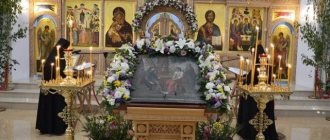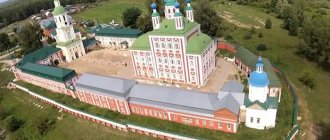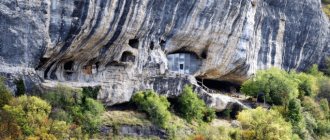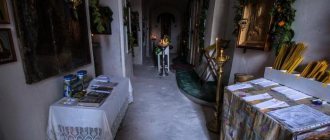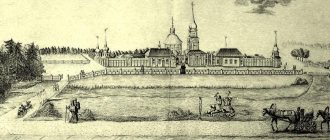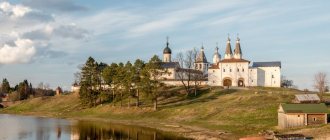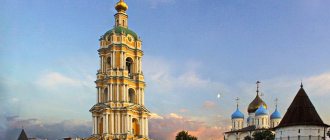Mir
Russia Novgorod Region Valdai Iversky Svyatoozersky Monastery Map loading in progress...
{"format":"leaflet","minzoom":false,"maxzoom":false,"limit":50,"offset":0,"link":"all","sort":[""], "order":[],"headers":"show","mainlabel":"","intro":"","outro":"","searchlabel":"\u2026 \u0441\u043b\u0435\ u0434\u0443\u044e\u0449\u0438\u0435 \u0440\u0435\u0437\u0443\u043b\u044c\u0442\u0430\u0442\u044b","default":"","import-annotation":false,"width ":"auto","height":"350px","centre":{"text":"","title":"""link":"""lat":57.9893560000000007903508958406746387481689453125,"lon": 33.3016649999999998499333742074668407440185546875,"icon":""},"title":"","label":"","icon":"","lines":[],"polygons":[],"circles":[ ],"rectangles":[],"copycoords":false,"static":false,"zoom":8,"defzoom":14,"layers":["OpenStreetMap"],"image layers":[] ,"overlays":[],"resizable":false,"fullscreen":true,"scrollwheelzoom":true,"cluster":false,"clustermaxzoom":9,"clusterzoomonclick":true,"clustermaxradius":80, "clusterspiderfy":true,"geojson":"","clicktarget":"","showtitle":true,"hidenamespace":false,"template":"","userparam":"","activeicon": "","pagelabel":false,"ajaxcoordproperty":"","ajaxquery":"","locations":[{"text":"\u003Cb\u003E\u003Ca href=\"/palomnik/%D0% 92%D0%B0%D0%BB%D0%B4%D0%B0%D0%B9%D1%81%D0%BA%D0%B8%D0%B9_%D0%98%D0%B2%D0%B5% D1%80%D1%81%D0%BA%D0%B8%D0%B9_%D0%A1%D0%B2%D1%8F%D1%82%D0%BE%D0%BE%D0%B7%D0% B5%D1%80%D1%81%D0%BA%D0%B8%D0%B9_%D0%BC%D1%83%D0%B6%D1%81%D0%BA%D0%BE%D0%B9_% D0%BC%D0%BE%D0%BD%D0%B0%D1%81%D1%82%D1%8B%D1%80%D1%8C\» title=\»\u0412\u0430\u043b\u0434\ u0430\u0439\u0441\u043a\u0438\u0439 \u0418\u0432\u0435\u0440\u0441\u043a\u0438\u0439 \u0421\u0432\u044f\u0442\u043e\u043e\u0 437\u0435\u0440\u0441\u043a\ u0438\u0439 \u043c\u0443\u0436\u0441\u043a\u043e\u0439 \u043c\u043e\u043d\u0430\u0441\u0442\u044b\u0440\u044c\"\u003E\u0412\ u0430\u043b\u0434\u0430\ u0439\u0441\u043a\u0438\u0439 \u0418\u0432\u0435\u0440\u0441\u043a\u0438\u0439 \u0421\u0432\u044f\u0442\u043e\u043e\u0437\u0 435\u0440\u0441\u043a\u0438\ u0439 \u043c\u0443\u0436\u0441\u043a\u043e\u0439 \u043c\u043e\u043d\u0430\u0441\u0442\u044b\u0440\u044c\u003C/a\u003E\u003C/ b\u003E","title" :»\u0412\u0430\u043b\u0434\u0430\u0439\u0441\u043a\u0438\u0439 \u0418\u0432\u0435\u0440\u0441\u043a\u0438\u0439 \u0421\u043 2\u044f\u0442\u043e\u043e \u0437\u0435\u0440\u0441\u043a\u0438\u0439 \u043c\u0443\u0436\u0441\u043a\u043e\u0439 \u043c\u043e\u043d\u0430\u0441\u0442\ u044b\u0440\u044c","link ":"","lat":57.9893560000000007903508958406746387481689453125,"lon":33.3016649999999998499333742074668407440185546875,"icon":""}],"im ageLayers":[]}
57.989441; 33.304698
Russia, Novgorod region, Valdai district, Roshchinskoye rural settlement, Selvitsky island
Novgorod region
Russia
Telephone.:
(pilgrimage center).
Valdai Iversky Monastery
Valdai Iversky Bogoroditsky Svyatoozersk Monastery
- an Orthodox monastery on the Selvitsky island of Lake Valdai in the Valdai district of the Novgorod region, 10 km from the city of Valdai. One of three monasteries built on the initiative of Patriarch Nikon, along with New Jerusalem and Cross.
History[edit]
Having ascended the patriarchal throne on July 25, 1652, Nikon expressed his intention to found a monastery in Russia in the image and likeness of the Iveron Monastery on Mount Athos. Tsar Alexei Mikhailovich approved the patriarch's enterprise and allocated funds from the treasury for the construction of the monastery. According to Pavel of Aleppo, the monastery was supposed to be built in the “Athos architectural traditions”; even the monastic vestments had to correspond to Greek models.
The choice of location for the monastery is connected with the vision that Nikon had during his trip to Solovki to retrieve the relics of Metropolitan Philip. Construction began in the summer of 1653, and by the fall two wooden churches were built and ready for consecration. The cathedral church was consecrated in honor of the Iveron Icon, and the warm one - in the name of St. Philip of Moscow. The Patriarch appointed Archimandrite Dionysius as the first abbot of the monastery.
During his first visit to the monastery under construction in February 1654, Nikon renamed the Valdai settlement into the village of Bogoroditskoye, and also named Valdai Lake Holy, having previously consecrated it and lowered the Gospel and the cross to the bottom (as local legend says). A letter from the patriarch to the king has been preserved, where he reports a vision of a sign in the form of a pillar of fire over the island. The monastery itself, in addition to its previous name, was called “Svyatoozersky”.
In 1653, under the supervision of the Patriarch, stone construction of monastery churches and buildings began. Nikon himself consecrated the newly created monastery; By order of the Patriarch, in February 1654 the holy relics of Jacob Borovichsky were transferred to the monastery from the Borovichi Monastery.
In May 1654, the royal charter was granted, assigning to the monastery not only Valdai Lake with the islands, but also other estates: Borovichi, Yazhelbitsy, Vyshny Volochyok. The Old Russian and some other monasteries of the Novgorod land were assigned to the monastery.
In 1655, the brethren of the Belarusian Orsha Kuteinsky Monastery, more than 70 people, moved to the monastery. Among the inhabitants at that time was the future Patriarch Joachim, as well as Isaac of Polotsk, the brother of Simeon of Polotsk. The monks transported all their property and printing house with them to the new place. With the arrival of the Kutein monks, book printing and bookbinding began to develop.
In 1656, the construction of the Assumption Cathedral was completed. On December 16 of the same year it was consecrated. Together with the Patriarch, Metropolitans of Novgorod Makariy and Sarsky Pitirim, Archbishop of Tver Lavrenty and numerous clergy from various dioceses of Russia arrived at the celebration. The cathedral is distinguished by its simplicity and monumental architectural forms. In 2008, Patriarch Alexy II renamed the Assumption Cathedral into a cathedral in honor of the Iveron Icon of the Mother of God.
By the beginning of the 18th century, the monastery fell into decay. From 1712 to 1730, the monastery with all its property and land was assigned to the Alexander Nevsky Monastery under construction. Even a large monastery bell was transported to the monastery of the northern capital. In 1764, the Iversky Monastery was founded in the first class.
In 1919, the monastery was transformed into the Iverskaya labor artel, numbering 70 people, and having 5 hectares of monastery land and 200 hectares of gardens, vegetable gardens, arable land, and pastures.
In 1927, the artel was examined by the People's Commissariat of Agriculture, whose report noted that the labor community was “too closely connected with the Iveron miraculous icon.” The last remark served as the reason for the deregistration of the artel; The monastic community was liquidated, and the Iveron Icon in an expensive frame was taken away to an unknown direction.
Subsequently, on the territory of the monastery there were: a historical and archival museum, a local history museum, workshops, a home for the disabled for participants in the Great Patriotic War, and a forest school for children with tuberculosis. In the 1970s, a village was created on the island, and a recreation center was opened on the territory of the monastery.
History of the Iveron Monastery
The Iversky Monastery (also known as Iveron) is located on the eastern coast of Mount Athos.
An ancient legend says that it was to this part of the peninsula that the ship of the Virgin Mary moored. Struck by the beauty of nature, the Mother of God came ashore, and at the same time as her first step, a healing spring unexpectedly emerged from the ground, the waters of which flow vigorously to this day. This place was later called Clement's Pier, and another important and interesting history of the Iversky Monastery will be connected with it. But first things first.
Construction of the monastery
The foundation of the temple began in 980 by the Georgian nobleman John of Iveron. The word “Iveria” itself is an ancient designation for Georgia. The name of the monastery pays tribute not only to its founder, but also to all his compatriots who participated in the construction of the shrine.
John of Iveron and his son at the beginning of their stay on Athos served with the elder St. Athanasius in the Great Lavra (therefore, today these monasteries are twinned). They led a decent life and for their virtues they earned the respect and blessing of St. Athanasius. Over time, more and more Georgians began to arrive on Athos in search of monastic shelter, so that the walls of the Lavra became crowded. Then John decided to found a separate monastery.
As a result of negotiations between the Georgian king and the Greek emperor, the ruins of the ancient Clement Monastery came into the possession of the Georgians. At this place John began the construction of a new monastery. He was helped in the construction by the Georgian warrior Torniky, who had lived on Mount Athos for a long time and was held in high esteem by the local residents. The financial side of the issue was managed thanks to the generous donations of King David Kuropalat and the Georgian people.
Construction was completed in 983. John himself became the first rector of the temple, and after his death this place was taken by his son. The expansion of the monastery and the construction of new churches continued after the death of the founders of the monastery.
Legend of the main shrine
The most ancient and legendary relic of the monastery is the Iveron Icon of the Most Holy Theotokos, also known as the Goalkeeper and Gatekeeper. These names are associated with a legend about the appearance of an icon within the walls of the monastery.
Iveron Icon of the Most Holy Theotokos – Goalkeeper
This story took place near the city of Nicaea at a time when the policy of iconoclasm was still being pursued. Saving the image of the Mother of God from inevitable death, one widow, with incessant prayers on her lips, lowered it into the sea waters, in the hope that the waves would save it and carry it away from the shore. The icon really wasn't found.
Centuries later, in 1004, the image of the Mother of God was washed up on the pier of a newly built monastery. Elder Gabriel discovered the blessed find. The day before, the Mother of God appeared to the monk and ordered him to walk on the water and transfer the shrine to the temple. The icon appeared before the elder in a bright pillar of light stretching to the heavens. Gabriel valiantly fulfilled the duties assigned to him and placed the icon on the altar.
Current state[edit]
In 1991, the monastery, which was in disrepair, was returned to the Novgorod diocese. In 1998, Archbishop Leo (Tserpicki) consecrated the Church of the Epiphany. Divine services were resumed in the Assumption Cathedral. At the end of 2007, a comprehensive restoration of the monastery was completed.
The shrine of the monastery became a copy of the Iveron Icon of the Mother of God, which in the 1950s - 1980s was kept in the only operating church in the Valdai region - the Peter and Paul (cemetery) church in Valdai. Her new precious robe, made by craftsmen from the city of Zlatoust, was consecrated on December 25, 2006.
On January 11, 2008, Patriarch Alexy was expected to arrive at the monastery to consecrate the restored Assumption (Iveron) Cathedral. On January 12, the Patriarch celebrated the Divine Liturgy in the Iversky Cathedral Church, before performing the rite of the Lesser Consecration of the Cathedral.
On September 19, 2009, the Valdai Iversky Monastery was visited by Kirill, Patriarch of Moscow and All Rus'. In January 2011, the restoration of the fresco painting of the Assumption (Iveron Cathedral), in the altar and throughout the temple to the lower tier was completed. There is a small museum dedicated to Patriarch Nikon and the history of the monastery.
Iveron – monastery temples
The Iveron Monastery, located on Mount Athos, is a temple complex.
The main cathedral of Iveron, dedicated to the Dormition of the Blessed Virgin Mary, was erected at the beginning of the 11th century by the abbot of the monastery, George. The original building lasted until the 16th century, when it was extensively rebuilt. The marble cladding with an inscription in honor of the founder of the cathedral has been preserved from the first temple. The interior is decorated with frescoes painted from the 16th to the 19th centuries.
In addition to the main cathedral, the monastery contains almost two dozen more paraklis (temples) dedicated to saints and great martyrs. The full list of churches of the Iversky Monastery is presented in the table.
| St. Nicholas the Wonderworker | Saint John the Evangelist |
| Cathedral of the Holy Archangels | Holy Protomartyr Stephen |
| Saints Constantine and Helen | Saints Cosmas and Damian without silver |
| Presentation of the Blessed Virgin Mary into the Temple | Exaltation of the Holy Cross |
| All Saints | Saint Modest |
| Saint Eustace | Holy Great Martyr George |
| Holy Martyr Neophytos | Saint Spyridon |
| Transfiguration of the Lord | Saint Dionysius the Areopagite |
| Chapel of John the Baptist | Chapel of Our Lady of the Goalkeepers (Portaitissa) |
How to get there[edit]
Directions:
The Valdai Iversky Monastery is located in the south-eastern part of the Novgorod region, 10 kilometers from the city of Valdai. There is a railway station in Valdai, so getting there is not difficult. Then in the summer you can get to the monastery from the city pier by boat. In winter you will have to take a taxi. By car, you should travel to the monastery along the Moscow - St. Petersburg highway (M-10). If you are coming from Moscow, you need to turn, before reaching Valdai, to Borovichi, and after two kilometers turn left again - to the monastery itself. If you are coming from St. Petersburg, you need to pass the city of Valdai (but not enter it), turn onto the highway to Borovichi and then follow the “Moscow” instructions.
Address:
175400, Novgorod region, Valdai, island.
Tel.:
(pilgrimage center).
Official site.
Pilgrimage to Mount Athos to the Iveron Monastery: how to get there and where to stay
Let us immediately note that Greek monks prohibit women from visiting Athos and visiting the monastery shrines. Only men can get here, and only after obtaining a special permit. This process is described in detail in the adjacent article about Holy Mount Athos. Having received the diamonitirion, you need to take a ferry from Ouranoupolis to the port of Daphne, the “sea gate” to Athos.
Iverion is located on the east coast and there is no ferry landing at its pier. You can get to the holy place by land. To do this, you need to take a regular bus from Daphne to Kariye, which coincides with the arrival of the ferry. There is often passing transport from Kary, the capital of Athos, to the Iveron Monastery.
You can also get to Iveron on foot. The distance from Kariye to the monastery is 7.5 km. But in this case you will need an experienced guide. If you have arrived at another monastery and are now traveling through all the monasteries of Athos, then it is better to explore Iveron after visiting the Philotheus or Stavronikita monastery. Convenient paths are laid from them to the Iversky Monastery.
You can stay overnight in the monastery itself. The monks will not refuse shelter to a traveler, but if Iveron is the main purpose of your visit, then it is better to arrange an overnight stay in advance. This can be done by contacting the office by phone (30-23770) 23643(-4-5-6). Food and accommodation on site are free, but it is better to thank the virtuous elders by purchasing souvenirs in a local shop.
Schedule of services[edit]
Weekdays:
7:00 - fraternal prayer service, morning prayers, midnight office, 3rd and 6th hours, Divine Liturgy, funeral lithium.
7:30 - Confession begins.
17:45 - 9th hour, Vespers and Matins (if the 9th hour is not read, then Vespers begins at 18:00).
Saturday, Sunday and holidays:
9:00 - morning prayers, Sunday midnight, 3rd and 6th hours, Divine Liturgy, prayer service, funeral lithium.
9:30 - Confession begins.
17:45 - 9th hour, Vespers and Matins (if the 9th hour is not read, then Vespers begins at 18:00).
On Sunday evening, an akathist is read before the Iveron Icon of the Mother of God.
On Tuesday evening, an akathist is read to the holy righteous Jacob Borovich.
The monastery is open to visitors from 07:00 to 20:00.
Where to stay[edit]
The St. Iversky Monastery operates a pilgrimage hotel designed for 100-200 people.
Hotel at the Iversky Monastery
On the 1st floor there is a refectory for pilgrims and parishioners. After the service, you can eat a hearty and tasty meal from the monastery. The refectory has a wide range of vegetable and fish dishes, both non-lenten and lenten.
You can book a room, learn more about the pilgrimage hotel of the Odessa St. Iveron Monastery, as well as order and hold funeral dinners in the refectory of the pilgrimage hotel by calling Elena on the phone
+38 (063) 771-41-11 or +38 (048) 700-11-41.
Check-out time at the pilgrimage hotel is 13:00, regardless of check-in time. The hotel has the right to demand that the room be vacated at a specified time. Room keys must be handed over to the hotel operator. Valuables and money must be kept with you.
Shrines
Among the shrines of the monastery, the Iversky Monastery in Valdai is noted:
- Iversky (Assumption) Cathedral,
- Church of the Archangel Michael,
- refectory with the Church of the Epiphany,
- Iveron Icon of the Mother of God, which was painted on Mount Athos,
- particles of holy relics.
The best article for you, go to: Male and female active monasteries in Moscow
The schedule of services and other detailed information for pilgrims can be found on the official website of the monastery.
